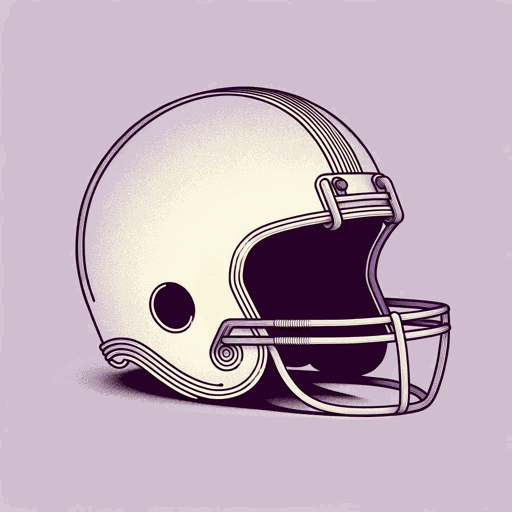50 pages • 1 hour read
Mark Fainaru-Wada, Steve FainaruLeague of Denial
Nonfiction | Book | Adult | Published in 2013A modern alternative to SparkNotes and CliffsNotes, SuperSummary offers high-quality Study Guides with detailed chapter summaries and analysis of major themes, characters, and more.
Summary and Study Guide
Overview
League of Denial: The NFL, Concussions, and the Battle for Truth is a 2013 work of investigative nonfiction by brothers Mark Fainaru-Wada and Steve Fainaru. The book chronicles the National Football League’s concussion crisis, which came to light with a few career-ending head injuries in the 1990s and became an even more serious issue as numerous deceased former players were found to have developed chronic traumatic encephalopathy (CTE). League of Denial won the PEN/ESPN Award for Literary Sports Writing in 2014 and was adapted into a Peabody Award-winning documentary film aired on the PBS-produced series Frontline.
The Fainaru brothers, who are both investigative reporters with sports media giant ESPN, break down the book into three sections: “Discovery,” which examines the post-football life of Hall of Fame center Mike Webster and the serious toll that concussions began taking on NFL players in the 1990s; “Denial,” which examines the discovery of CTE in former players and the NFL’s attempt to downplay and cover up the seriousness of the issue; and “Reckoning,” which primarily examines how the NFL sought to deal with the issue as more cases of CTE were found and as proof that football was the cause became irrefutable.
The first section of League of Denial alternates between Webster’s tragic post-football life and specific, serious concussions sustained by NFL players such as Merril Hoge, Al Toon, Troy Aikman, and Steve Young during the 1990s. Widely considered one of the finest offensive linemen in NFL history, Webster was a key member of the Pittsburgh Steelers dynasty that won the team four Super Bowl titles during the 1970s. Webster played from 1974 through 1990, primarily with the Steelers, earning seven First Team All Pro selections, nine Pro Bowl selections, and induction into the Pro Football Hall of Fame in 1997.
Webster, who had been one of the League’s strongest players, began to lose control of his life almost immediately after retiring. He had problems with depression and memory and was suddenly quick to anger. His family fell into serious financial trouble, and following a divorce, Webster became essentially homeless, living in his truck at times and sleeping in bus stations at others. Knowing that football had caused the obvious brain damage that he was suffering from, Webster became bitter at the NFL and obsessed with winning a disability claim against the League. In 1999, with the help of legal and medical support, Webster finally won his case, and the League’s disability committee determined that pro football had caused his brain damage. Less than three years later, Webster died.
Bennet Omalu, the forensic pathologist in Pittsburgh who performed the autopsy, had learned about Webster’s problems. What Omalu suspected to find was dementia pugilistica, or “punch-drunk syndrome” as it was formerly known when found in the brains of deceased boxers. Instead, Omalu found tangles of tau protein, similar to those found in the brains of Alzheimer’s patients but distributed in different areas of Webster’s brain. Nearly a decade before Omalu studied Webster’s brain, it was becoming clear that concussions were having a more serious impact on NFL players, but the League only offered the tepid response of forming its own Mild Traumatic Brain Injury (MTBI) Committee. Made up primarily of team doctors who for years had been sending concussed players back into games, the MTBI committee began conducting research but refused to acknowledge that concussions were widespread or that they led to brain damage. This pattern of denial continued throughout the latter half of the 1990s and even after Omalu discovered CTE in Webster’s brain in 2002 and in the brains of three more deceased players in the following years.
By 2008, the brains of six former NFL players had been examined after their deaths. All six had experienced post-career problems similar to Webster’s, and all six were found to have CTE. As football’s concussion crisis was growing, so, too, was the competition between researchers and institutions, which were now vying for the brains of deceased players. Despite the mounting evidence that football had caused brain damage in an expanding list of players, the NFL, now under the leadership of new-commissioner Roger Goodell, continued to question the link. In attempting to conduct its own research while attacking other scientific findings as inconclusive, the NFL used tactics to downplay the link between football and CTE that were strikingly similar to those used by Big Tobacco in the 1990s to deny the link between smoking and cancer. In the book’s final section, Fainaru-Wada and Fainaru explore the comparison between the NFL and the tobacco industry while examining the legal ramifications for the League and the steps that the NFL has taken to address the issue.

